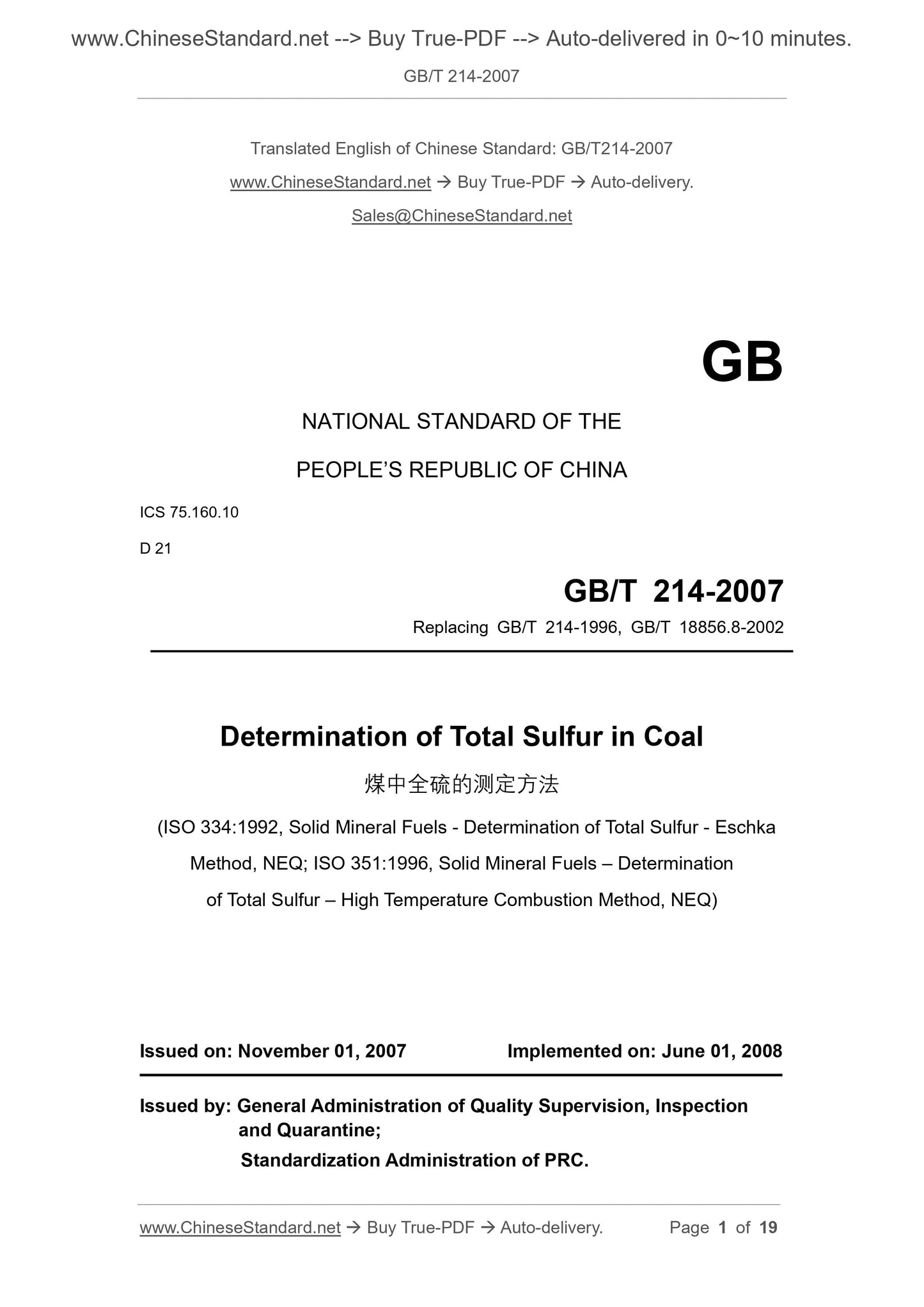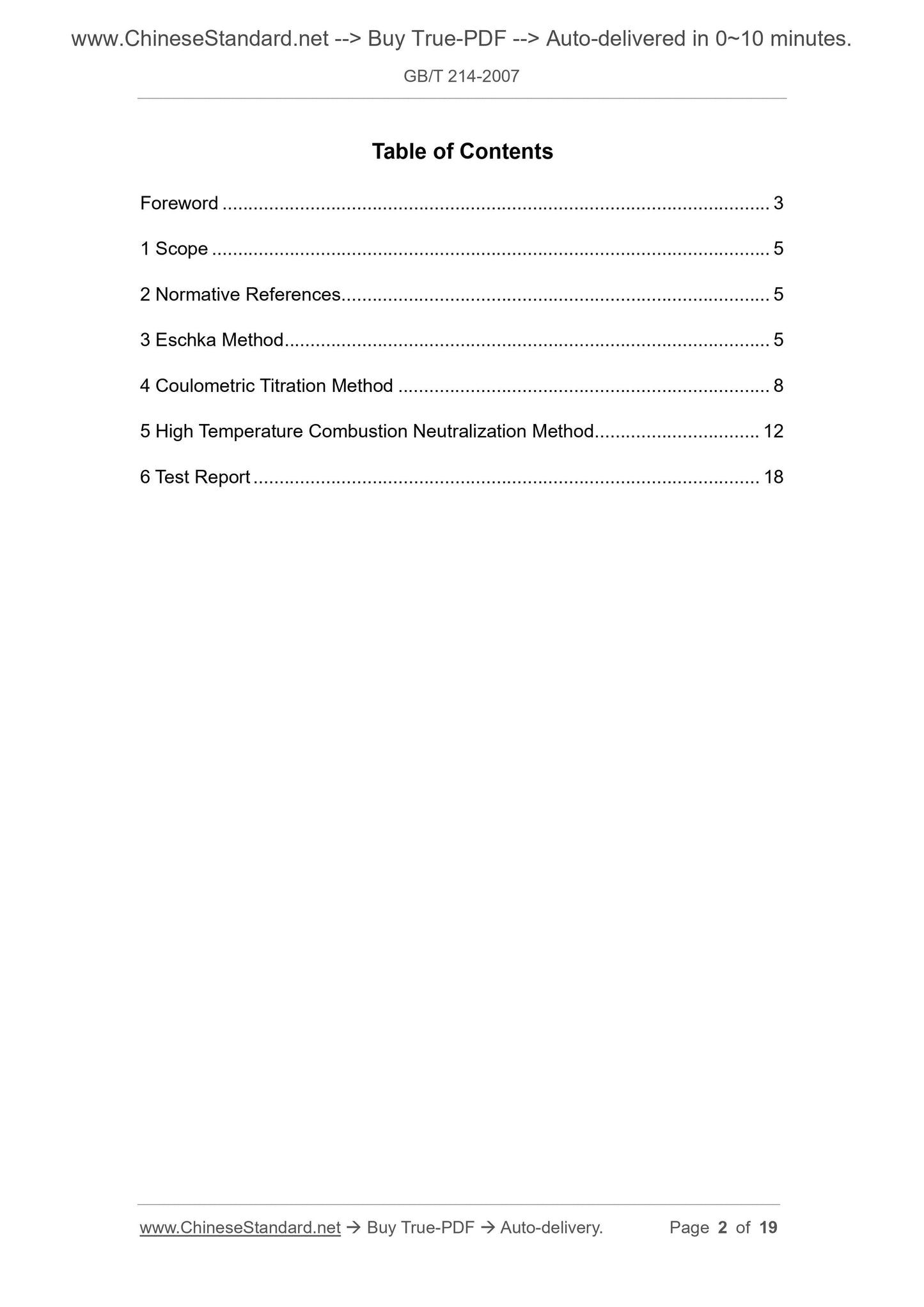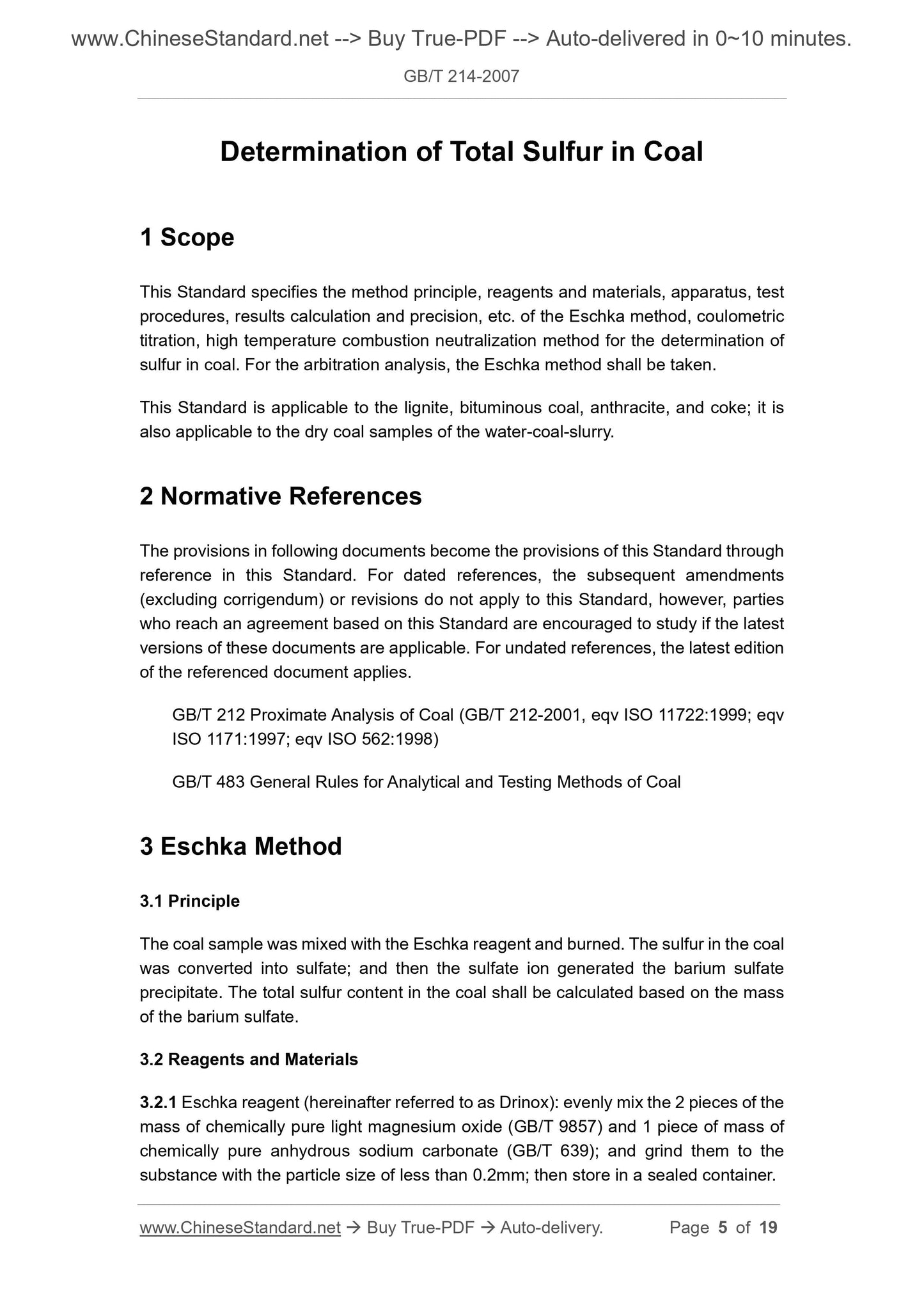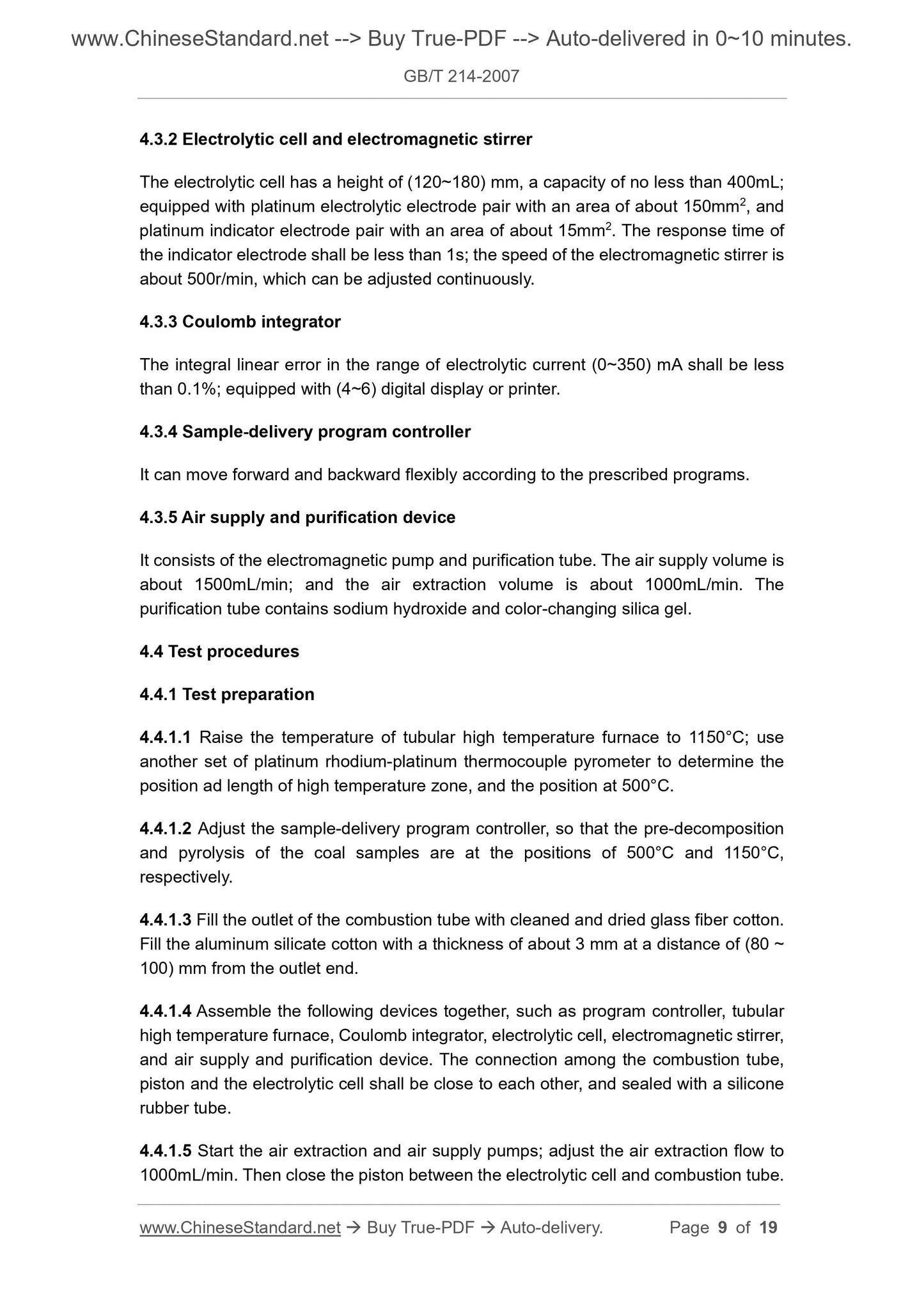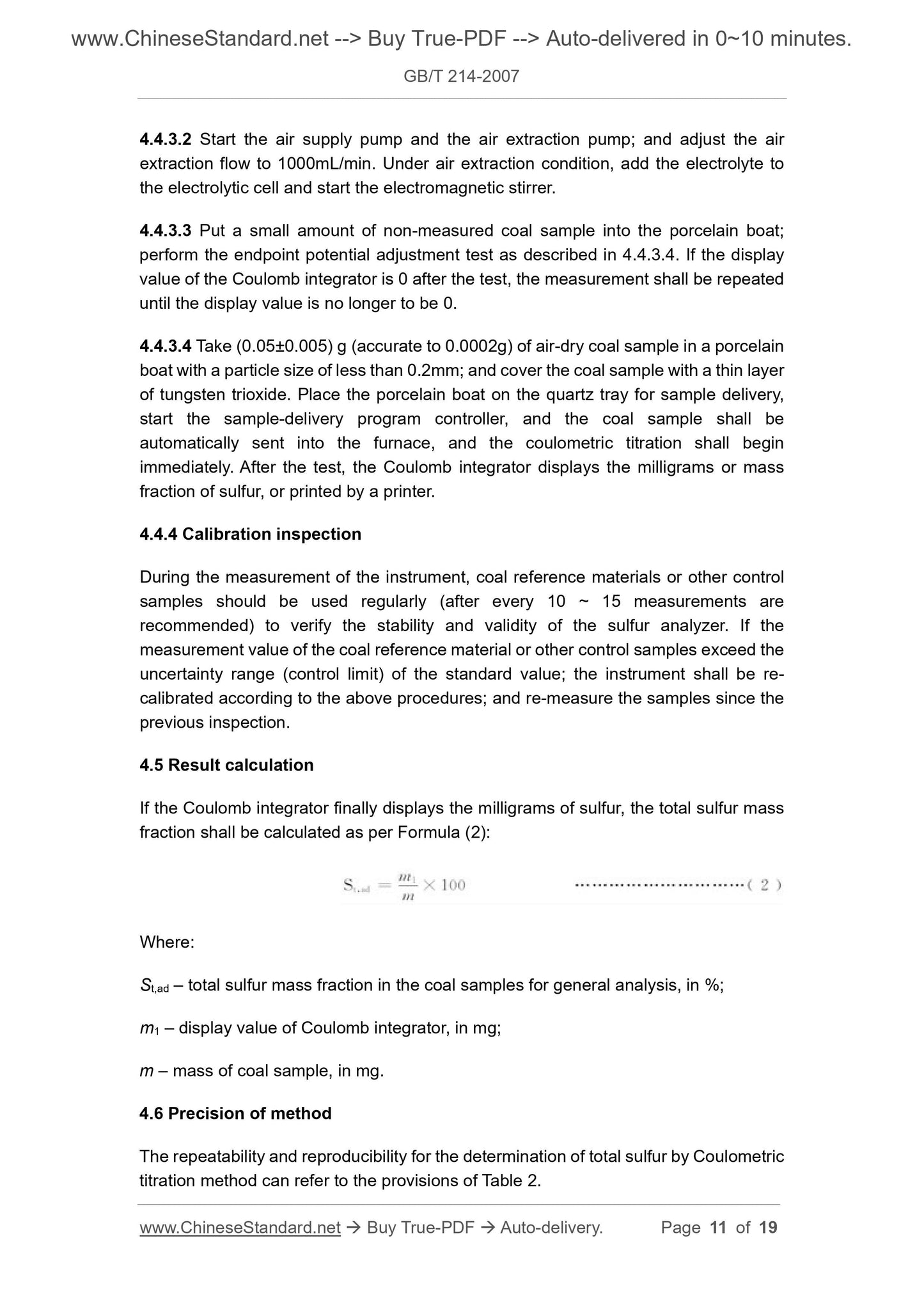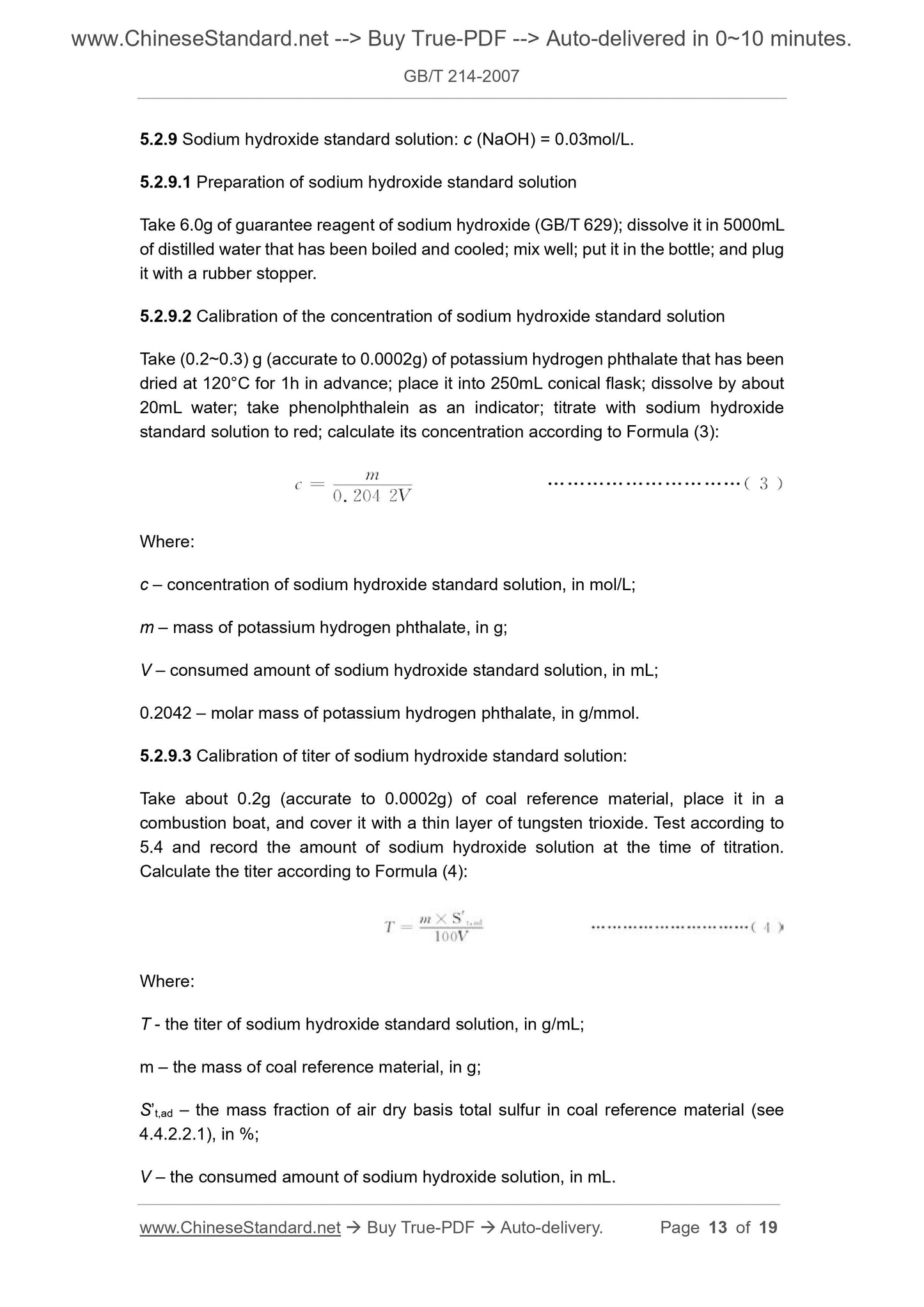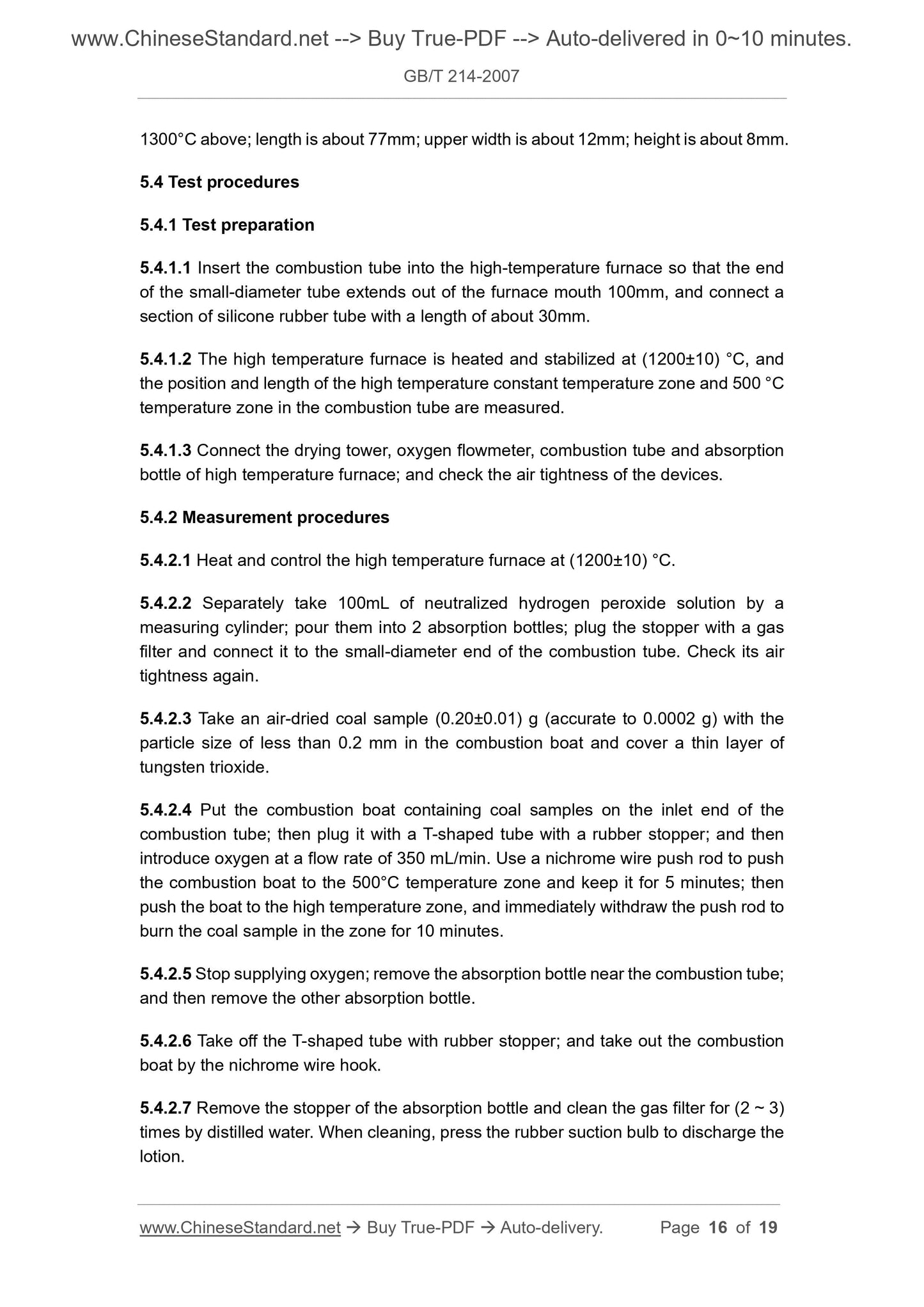1
/
of
7
www.ChineseStandard.us -- Field Test Asia Pte. Ltd.
GB/T 214-2007 English PDF (GB/T214-2007)
GB/T 214-2007 English PDF (GB/T214-2007)
Regular price
$105.00
Regular price
Sale price
$105.00
Unit price
/
per
Shipping calculated at checkout.
Couldn't load pickup availability
GB/T 214-2007: Determination of total sulfur in coal
Delivery: 9 seconds. Download (and Email) true-PDF + Invoice.Get Quotation: Click GB/T 214-2007 (Self-service in 1-minute)
Newer / historical versions: GB/T 214-2007
Preview True-PDF
Scope
This Standard specifies the method principle, reagents and materials, apparatus, testprocedures, results calculation and precision, etc. of the Eschka method, coulometric
titration, high temperature combustion neutralization method for the determination of
sulfur in coal. For the arbitration analysis, the Eschka method shall be taken.
This Standard is applicable to the lignite, bituminous coal, anthracite, and coke; it is
also applicable to the dry coal samples of the water-coal-slurry.
Basic Data
| Standard ID | GB/T 214-2007 (GB/T214-2007) |
| Description (Translated English) | Determination of total sulfur in coal |
| Sector / Industry | National Standard (Recommended) |
| Classification of Chinese Standard | D21 |
| Classification of International Standard | 75.160.10 |
| Word Count Estimation | 11,178 |
| Date of Issue | 2007-11-01 |
| Date of Implementation | 2008-06-01 |
| Older Standard (superseded by this standard) | GB/T 18856.8-2002; GB/T 214-1996 |
| Quoted Standard | GB/T 212; GB/T 483 |
| Adopted Standard | ISO 334-1992, NEQ; ISO 351-1996, NEQ |
| Regulation (derived from) | National Standard Approval Announcement 2007 No.12 (Total No.112) |
| Issuing agency(ies) | General Administration of Quality Supervision, Inspection and Quarantine of the People's Republic of China, Standardization Administration of the People's Republic of China |
| Summary | This standard specifies the determination of total sulfur in coal��ʿ��law, coulometry, principle of the method and the high-temperature combustion method, reagents and materials, equipment, test procedures, results of calculation and precision and so on. This standard applies to lignite, bituminous coal, anthracite and coke, also applies to the CWS dried coal samples. |
Share
